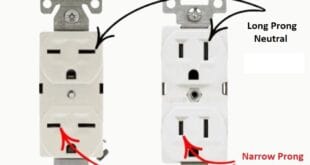Why Don’t Birds Get Electrocuted on Power Lines?
Birds on power lines are a common sight. As you watch them sitting high above the ground, seemingly without a care in the world, you may wonder—why don’t they get electrocuted? After all, those power lines carry thousands of volts of electricity. The answer to this fascinating question involves a mix of biology and basic electrical principles, especially the concept of voltage differences. In this article, we’ll explain why birds can safely perch on power lines and what would happen if they made a wrong move. We’ll also touch on the crucial concept of voltage and save the in-depth explanation of electrical principles for those of you who want to dive deeper into the science.
How Power Lines Work
Before we get into why birds aren’t electrocuted, let’s first talk about how power lines work. Power lines are the backbone of our electrical grid, carrying electricity across vast distances to homes, businesses, and industries. They transmit high-voltage electricity because it’s more efficient to move electricity long distances at high voltage and low current, reducing energy loss along the way. The power in these lines can reach anywhere from 10,000 volts to 765,000 volts, depending on the type of transmission line.
While this electricity is dangerous for humans and most animals, birds and squirrels seem to sit on power lines with ease. So, what’s going on here?
Why Birds Don’t Get Electrocuted on Power Lines

To understand why birds don’t get electrocuted, we first need to talk about electricity’s natural behavior. Electricity flows along the path of least resistance, always seeking to move from a high-energy state to a low-energy state, also known as moving between areas of different electrical potential (voltage difference).
When a bird sits on a single wire, both of its feet are touching the same wire, which means they are at the same electrical potential. There is no voltage difference between its feet, and since the bird isn’t grounded—connected to the earth or another object that would allow electricity to flow through it—the electricity stays on the power line. Without a voltage difference, there is no reason for the electricity to flow through the bird’s body.
Key Point: Voltage Difference
Electricity only flows when there is a difference in voltage between two points. Birds on power lines aren’t electrocuted because they don’t create that difference—both feet are at the same voltage. It’s only when a bird touches two points with different voltages that the danger arises.
Let’s use an analogy: Imagine walking on a flat road. You don’t expend much energy because there’s no change in height (no difference in potential energy). But if you were to walk up a hill, you would use more energy because you’re moving from a lower to a higher elevation. Similarly, electricity needs a “hill” (voltage difference) to flow from one point to another.
What Happens When Birds (or Other Animals) Touch Two Wires?
While birds are safe when sitting on a single wire, the situation changes if they were to touch two wires at once, or a wire and a grounded object, like a metal pole. In these scenarios, there is a voltage difference, and the bird would create a path for the electricity to flow. This can result in electrocution.
Touching Two Wires
Power lines carry different phases of electricity, meaning that each wire can have a different voltage level. If a bird, or any other animal, stretches out and touches two wires at once, it creates a voltage difference across its body. The electricity will flow from the higher voltage wire, through the bird, and into the lower voltage wire. This sudden flow of electricity can easily kill the bird.
Touching a Grounded Object
Similarly, if a bird touches a power line and a grounded object (such as a utility pole, metal structure, or the ground itself), it creates a direct path for electricity to flow. In this case, the voltage difference between the live wire and the ground will cause electricity to flow through the bird’s body, leading to electrocution.
Why Humans Are at Risk Around Power Lines
Unlike birds, humans are not usually in a position to perch safely on a single wire without touching anything else. If a person were to touch a power line while standing on the ground or while touching another grounded object, they would create a direct path for electricity to flow. The voltage difference between the power line and the ground is enough to send a deadly surge of electricity through the human body.
This is why power line safety is such a critical issue for utility workers and the public. Accidental contact with power lines is one of the most dangerous hazards for people working near electrical systems. Utility workers wear insulated gear and use specialized tools to minimize the risk of electrocution, but for most of us, the safest approach is to stay far away from power lines.
What About Other Animals?
Birds aren’t the only animals that come into contact with power lines. Squirrels, raccoons, and even large animals like bears sometimes climb electrical infrastructure. Unfortunately, these animals are often at greater risk than birds. If a squirrel or raccoon touches two wires or a wire and a grounded object, they can be electrocuted just like a human.
In fact, animals are one of the most common causes of power outages. When an animal is electrocuted, it can trip the electrical system, leading to outages in homes and businesses. Power companies have developed various solutions to minimize these risks, such as animal guards and insulated lines, but it remains a challenging problem.
The Role of Voltage and Current
At this point, you might be wondering—what about voltage and current? We’ve mentioned that birds don’t get electrocuted because there’s no voltage difference, but what does that mean in electrical terms?
Voltage is the driving force that pushes electrical current through a conductor. The higher the voltage, the greater the potential for electricity to flow. Current, on the other hand, is the flow of electricity itself. Even if a high voltage exists, electricity won’t flow unless there’s a path for current to travel. That’s why a bird sitting on a single power line (with no voltage difference) doesn’t experience a flow of current through its body, and therefore doesn’t get electrocuted.
For a Full Explanation of Electrical Principles…
For those of you who want to dive deeper into the science behind voltage, current, and electrical resistance, we’ve got a full breakdown waiting for you on our website. We’ll explain how these concepts work together to make electricity flow and how they apply to everything from power lines to the devices you use every day.
Electrical Safety Tips for Humans
Even though birds can safely sit on power lines, humans are not so fortunate. Here are some essential safety tips to keep in mind around electrical infrastructure:
- Never touch a power line: Whether it’s above you or down on the ground, assume every power line is live and dangerous.
- Stay clear of utility poles and substations: These areas contain high-voltage equipment that poses a serious risk of electrocution.
- Report downed power lines immediately: If you see a power line that has fallen, don’t approach it. Call your local utility company or emergency services right away.
Frequently Asked Questions (FAQs)
Q: Why don’t birds get electrocuted when sitting on power lines?
A: Birds don’t get electrocuted because they aren’t creating a voltage difference. Both of their feet are touching the same wire, so there’s no electrical potential difference between the two points. Without a voltage difference, there’s no reason for electricity to flow through their bodies.
Q: What happens if a bird touches two power lines?
A: If a bird touches two power lines at once, it creates a voltage difference across its body. Since the power lines carry different voltages, electricity will flow from the higher voltage wire through the bird’s body to the lower voltage wire, resulting in electrocution.
Q: Can birds get electrocuted by touching a power line and a grounded object?
A: Yes, if a bird touches a power line and a grounded object like a metal pole or the ground itself, it creates a path for electricity to flow. The voltage difference between the power line and the ground would cause electricity to pass through the bird’s body, leading to electrocution.
Q: Why do humans get electrocuted when they touch power lines?
A: Humans are at risk because they typically create a voltage difference by either touching the ground or a grounded object while in contact with a power line. The voltage difference between the power line and the ground allows electricity to flow through the body, which can result in electrocution.
Q: How do power companies prevent animals from causing outages?
A: Power companies often use various methods to protect animals and minimize outages, such as installing animal guards, covering electrical equipment with insulating materials, and using insulated power lines in areas prone to wildlife contact.
Q: Are other animals, like squirrels and raccoons, safe on power lines?
A: While these animals often climb power lines, they are at greater risk than birds. If they touch two wires or a wire and a grounded object, they create a voltage difference, which can lead to electrocution.
Why Understanding Electrical Principles Matters
The question of why birds don’t get electrocuted on power lines offers an excellent opportunity to understand the basic principles of electricity, like voltage differences, current flow, and electrical potential. Although birds are uniquely suited to perching on power lines without harm, the situation for other animals—and humans—is much more dangerous.
Understanding how electricity behaves is crucial for maintaining safety around electrical infrastructure, especially as we become more reliant on electricity in our everyday lives. It’s not just about power lines—knowing how voltage and current work can help you stay safe around any electrical equipment, whether you’re working on an electrical project at home or simply walking near power lines.
Conclusion
Birds can safely sit on power lines because they don’t create a voltage difference, and without a voltage difference, electricity has no reason to flow through their bodies. However, if they were to touch two wires or a wire and a grounded object, they could be electrocuted just like any other animal or human.
This seemingly simple question leads to a deeper understanding of how electricity works. By grasping the concepts of voltage, current, and electrical potential, we can appreciate the fascinating behavior of electricity and ensure our own safety when around electrical systems.
For a more detailed dive into the science behind voltage differences and electrical principles, check out the in-depth explanations available on our website. There, you’ll find everything you need to know about how electricity flows and how to stay safe around it.
 Electrical Engineering World Wiring a Brighter Tomorrow!
Electrical Engineering World Wiring a Brighter Tomorrow!


